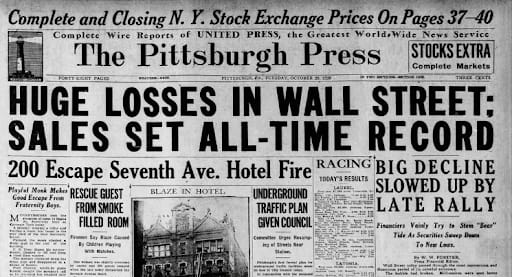- PE 150
- Posts
- Where the Smart Capital Is Going in Private Markets
Where the Smart Capital Is Going in Private Markets
Capital is getting smarter — not faster. Endowments and LPs are shifting toward steady yield, tighter allocations, and long-term conviction in private markets.
Good morning, ! This week we’re unpacking the University Endowment landscape, global PE fundraising activity in the L12M. We also break down LP’s private markets allocation, and how funds with incentive fees generally lend at rates above their hurdle rate. Plus, insights on our microsurvey: the senior lending thesis is alive and well.
Want to advertise in PE 150? Check out our self-serve ad platform, here.
Know someone who would love this? Pass it along—they’ll thank you later! Here’s the link.
DATA DIVE
University Endowments: The $700B Club

University endowments now manage $700B+, and over half of it sits in alternative assets. Led by juggernauts like UTIMCO ($69B) and Harvard ($56.9B), these institutions aren’t just LPs — they’re sovereign-wealth-lite, with perpetual mandates, 9% return targets, and little fear of lockups.
PE managers know the drill: endowments offer long-duration capital, fee stability, and often co-invest upside. As public scrutiny and taxes rise, endowments double down on alternatives, chasing both alpha and tax efficiency.
The result? These ivory tower funds have evolved from sleepy bondholders into hyper-disciplined allocators — underwriting your next fund, your co-invest deal, and, probably, your kids’ scholarships.
TREND OF THE WEEK
The Fewer, the Mightier

Global private equity fundraising has entered its downcycle, but the money’s still flowing — just to fewer hands. According to KPMG’s Q3 2025 Pulse of Private Equity, global PE fundraising dropped to $433B, down from $660B at the 2023 peak. Fund count? Nearly halved, from 1,800 to ~800. The gap tells the real story: capital consolidation. Institutional LPs are parking more dollars with large, proven GPs while emerging managers fight uphill. The slowdown mirrors a tougher exit and rate environment, but the resilience in dollars raised signals a deeper truth — private capital isn’t shrinking, it’s just concentrating. (More)
PRESENTED BY GAIN PRO
Who are the biggest private equity investors in the US? See the top 250 shaping the market.
Discover the most influential private equity investors in the United States, ranked by the total enterprise value of their US portfolio companies.
In this report, you’ll find in-depth insights into investment trends, sector shifts, and regional dynamics that define US private equity today. Highlights include:
Where the most active investors rank — with Blackstone, KKR & Apollo leading at $446bn combined
Which sectors dominate — with TMT well ahead, followed by Services and Science & Health
How concentrated the market is — the top 25 firms manage nearly half of total US 250 EV
How US investment is shifting across regions
A differentiated view of market power, scale, and deal momentum
Whether you’re benchmarking peers, exploring potential partners, or tracking the most active players, this report is your essential guide to US private equity today.
Download the full US 250 report and uncover the trends shaping tomorrow’s dealmaking.
LIQUIDITY CORNER
The “Guaranteed Bonus” Illusion

Private Credit’s “incentive” fees look more like built-in bonuses than performance rewards. Morningstar’s latest data shows that lending spreads at leading credit funds — from Blackstone, StepStone, and Blue Owl — all top their 5% hurdle rates by 25–35 basis points. The result? Managers almost always collect. Because these fees are tied to income, not total return, a fund’s NAV can drop while its managers still cash in. Add a little leverage, and the hurdle becomes a speed bump. Investors calling this “performance-based” are being generous — it’s more like performance-assured. (More)
DEAL OF THE WEEK
Permira’s £2.3B Bet on JTC: Third Time’s the Charm
Private equity heavyweight Permira finally sealed the deal to take JTC private in a £2.3B ($3.1B) transaction—after months of back-and-forth and two rejected offers. JTC shareholders are cashing out at 1,340 pence per share, a hefty 50% premium over pre-bid prices. The Jersey-based fund and corporate services firm had previously fended off Warburg Pincus and even caught Advent International’s eye before the latter walked away.
The win caps a persistence play for Permira: patience, persistence, and a 39% rally in JTC’s stock since talks went public. The move reinforces a broader PE trend—fund administrators and fiduciary service providers are the new frontier for scalable, recurring-revenue targets.
The bottom line: In an industry built on long-term client trust, Permira just bought itself a moat—and a margin. (More)
TOGETHER WITH MASTERWORKS
Crash Expert: “This Looks Like 1929” → 70,000 Hedging Here
Mark Spitznagel, who made $1B in a single day during the 2015 flash crash, warns markets are mimicking 1929. Yeah, just another oracle spouting gloom and doom, right?
Vanguard and Goldman Sachs forecast just 5% and 3% annual S&P returns respectively for the next decade (2024-2034).
Bonds? Not much better.
Enough warning signals—what’s something investors can actually do to diversify this week?
Almost no one knows this, but postwar and contemporary art appreciated 11.2% annually with near-zero correlation to equities from 1995–2024, according to Masterworks Data.
And sure… billionaires like Bezos and Gates can make headlines at auction, but what about the rest of us?
Masterworks makes it possible to invest in legendary artworks by Banksy, Basquiat, Picasso, and more – without spending millions.
23 exits. Net annualized returns like 17.6%, 17.8%, and 21.5%. $1.2 billion invested.
Shares in new offerings can sell quickly but…
*Past performance is not indicative of future returns. Important Reg A disclosures: masterworks.com/cd.
PRIVATE CREDIT
LP Under-Allocation = Deployment Window
43% of LPs remain under-allocated to private credit, according to new data—despite the asset class continuing to scale as a preferred income and diversification play. Just 12% of LPs are over-allocated, signaling ample room for fresh capital inflows.
Why it matters: Amid high rates and uneven public markets, private credit remains one of the few asset classes offering both yield and structural seniority. Yet many institutions still haven’t hit their target exposure. This gap is becoming a key opportunity for GPs looking to raise and deploy dry powder.
What’s driving it? Private credit is still a newer allocation for many LPs relative to PE or real estate, and internal bandwidth constraints or denominator effects may be slowing rebalancing. But in a capital-starved deal environment, that under-allocation represents latent demand.
Bottom line: As co-investment and secondaries struggle with 62% and 45% under-allocation rates respectively, credit may be the near-term beneficiary of LPs rebalancing back to targets—especially in yield-hungry portfolios. (More)

MICROSURVEY
One Market, Three Perspectives
Private credit is booming but not everyone’s chasing the same yield.
In our latest proprietary survey, we asked 134 market participants where they see the most attractive opportunities today. The answers reveal a clear divergence by role:
PE sponsors are evenly split between senior direct lending (40%) and opportunistic distressed credit (40%), with only 20% leaning toward NAV and GP financing.
Bankers, by contrast, are more focused on structure: 36% cited NAV loans and GP financing as most attractive—making it the top choice for the group.
Corporate development teams are firmly in the senior direct camp, with 47% pointing to it as the most attractive strategy—more than any other group.
Why it matters: Private credit is no longer a monolith. The senior lending thesis is alive and well, especially for Corp Dev teams looking to finance deals directly. But rising demand for GP-led secondaries and NAV loans has created a parallel market—one more popular among intermediaries than operators.
The takeaway? Know your counterparty. In this bifurcated market, what looks like a risk to some is an edge to others. (More)

MACROVIEW
Rebalancing Act: The Labor Market Finds Its Feet

After months of declines, the October jobs report offered a modest upside: +42,000 private-sector jobs. But zoom in, and the story’s more about structural shifts than recovery. Healthcare and logistics are leading; white-collar sectors, not so much. The Northeast saw job losses, while the West carried nearly all the gains. Add in flat wage growth, and the labor market now looks more “soft landing” than “resurgent boom.” For PE-backed roll-ups, this cooling may ease hiring costs—but don’t expect tailwinds if your targets rely on consumer discretionary or SMBs. (More)
COMPLIANCE CORNER
The SEC’s Expanding Circle of Friends

The SEC’s new rules don’t just apply to private funds as we traditionally know them—they’ve also RSVP’d “similar pools of assets” to the compliance party. These include vehicles with substantially similar investment strategies, like parallel or master-feeder structures, even if they're not classic 3(c)(1) or 3(c)(7) funds. The kicker? Even offshore funds might get dragged in—if they’re tied to U.S. private funds, advisers need to harmonize redemption rights and portfolio disclosures across structures. Real estate or CIT funds using different 3(c) exemptions might escape, but only if they're not being counted as “qualifying private funds” under the Advisers Act. In other words, your fund may be nontraditional—but that won’t keep it off the SEC’s radar. (More)
THIS WEEK IN HISTORY
The Wall That Opened the World

Thirty-six years ago this week, the Berlin Wall fell, and global markets never looked the same. When East German guards opened the gates on November 9, 1989, it didn’t just reunify Berlin — it unleashed a wave of privatization, liberalization, and cross-border capital flows that redefined modern finance. For private equity, it was the birth of globalization: undervalued assets across Central and Eastern Europe turned into new frontiers for dealmakers. The logic was simple — open markets create opportunity — and the PE playbook went global. Today’s geopolitical fragmentation feels like déjà vu, but the lesson from 1989 still stands: when barriers fall, capital rushes in. (More)
INTERESTING ARTICLES
TWEET OF THE WEEK
"There are no secrets to success. It is the result of preparation, hard work, and learning from failure."
Colin Powell






